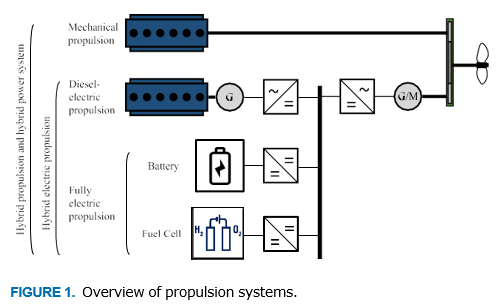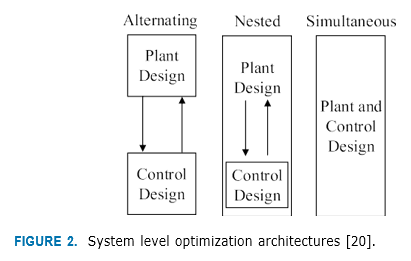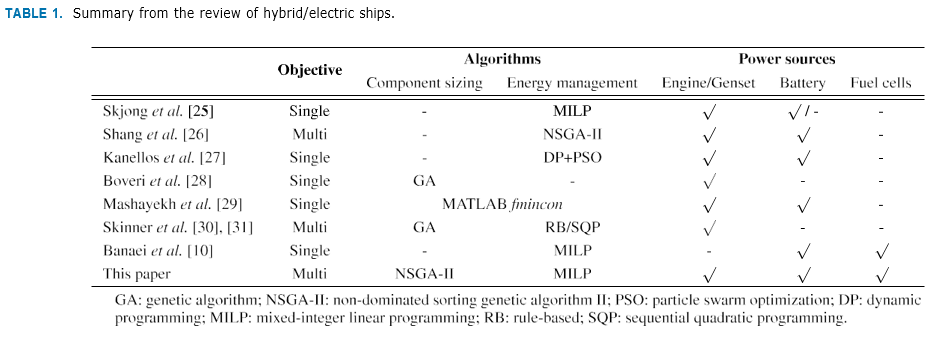
- •I. Introduction
- •II. Vessel descriptions and assumptions a. Ship parameters
- •B. Hybrid propulsion and operational modes
- •C. Operational profiles
- •III. Optimization definition
- •A. Optimization procedure
- •B. Optimization variables and objectives
- •C. Optimization constraints
- •IV. Results and discussions a. Optimized pareto fronts
- •B. Small emission reduction
- •C. Medium emission reduction
- •D. Ultimate emission reduction
- •V. Conclusion
МИНИСТЕРСТВО НАУКИ И ВЫСШЕГО ОБРАЗОВАНИЯ РФ
ФЕДЕРАЛЬНОЕ ГОСУДАРСТВЕННОЕ БЮДЖЕТНОЕ ОБРАЗОВАТЕЛЬНОЕ УЧЕРЕЖДЕНИЕ ВЫСШЕГО ОБРАЗОВАНИЯ
«НИЖЕГОРОДСКИЙ ГОСУДАРСТВЕННЫЙ ТЕХНИЧЕСКИЙ УНИВЕРСИТЕТ ИМ.Р.Е. АЛЕКСЕЕВА»
Кафедра «Иностранные языки»
Перевод статьи
По дисциплине: «Английский язык»
Sizing and control of a hybrid ship propulsion system using multi-objective double-layer optimization
Определение размеров и управление гибридной силовой установкой судна с использованием многоцелевой двухуровневой оптимизации
Выполнил:
Группа:
Проверил: Иванов А. С.
Нижний Новгород, 2024
Content
1. Article……………………………………………………………………………... |
2 |
2. Translation of the article………………………………………………………….. |
31 |
3. Resume……………………………………………………………………………. |
44 |
4. Vocabulary………………………………………………………………………... |
46 |
5. References………………………………………………………………………… |
50 |
1. ARTICLE
ABSTRACT
Ship hybridization has received some interests recently in order to achieve the emission target by 2050. However, designing and optimizing a hybrid propulsion system is a complicated problem. Sizing components and optimizing energy management control are coupled with each other. This paper applies a nested double-layer optimization architecture to optimize the sizing and energy management of a hybrid offshore support vessel. Three different power sources, namely diesel engines, batteries and fuel cells, are considered which increases the complexity of the optimization problem. The optimal sizing of the components and their corresponding energy management strategies are illustrated. The effects of the operational profiles and the emission reduction targets on the hybridization design are studied for this particular type of vessel. The results prove that a small emission reduction target of about 10% can be achieved by improving the diesel engine efficiency using the batteries only while the achievement of a larger emission reduction target mainly depends on the amount of the hydrogen and/or on-shore charging electricity consumed. Some design guidelines for hybridization are derived for this particular ship which could be also valid for other vessels with similar operational profiles.
I. Introduction
Climate change policies are creating significant restrictions on greenhouse gas emissions in the transportation industry [1]. The shipping emissions occupies from 2.76% in 2012 to 2.89% in 2018 in the global anthropogenic green- house gas emissions [2]. This industry section is under great pressure to meet the emission target of at least 50% reduction by 2050 [2]. Electrification is one of the promising ways to reduce CO2 emissions. Therefore, hybrid and electric vessels have received a lot of interest recently.
Fig. 1 shows some common propulsion systems of hybrid and electric ships in practice. The well-known mechanical propulsion systems are widely adopted for ship applications. Based on the original mechanical propulsion systems, the diesel-electric propulsion systems are then applied to decouple the power generation and power consumption [3]. The operating point of the diesel generator can even be decoupled from the rotational speed of the main shaft by using a DC bus [4], [5] which finally increases the efficiencies of the diesel engines. The electric propulsion systems have been developed quickly after the batteries, especially lithium-ion (Li-ion) batteries, are integrated into the propulsion systems [6], [7]. Recently, hydrogen fuel cells have attracted interest because of their relatively high energy density [8] and completely emission-free [9], [10]. They have been widely investigated for automotive applications [11], [12]. However, they are barely studied for marine applications [10], [13]. Several different types of hydrogen fuel cells for maritime applications are reviewed in [14]. Low temperature polymer electrolyte membrane fuel cell (PEMFC) is most promising for ships with mission requirements up to a dozen hours [14].

High temperature fuel cells like solid oxide fuel cell (SOFC) can achieve higher overall system efficiencies. However, SOFC has not yet been fully ready for maritime applications due to its poor dynamic performance [15]. Fig. 1 also shows the hybrid propulsion system in which the propeller is driven by different types of movers and/or the electrical system is supplied by different power sources [16]. The hybrid propulsion system provides more flexible operation modes, such as power take off, power take in, and power take home [17]. The detailed benefits of hybridization have been investigated for eight types of vessels with various operational profiles [18].
However, on the other hand, the hybridization results in a more complicated design and optimization for the propulsion system. The design process is a multi-objective optimization problem that spreads over topology [19], sizing, and control (energy management). Fortunately, for automotive industry, the system level optimization strategies have been well studied and applied to electric vehicle applications [20]. Fig. 2 shows the optimization architectures which are widely used in automotive industry. The most popular optimization architecture is the control design (the inner layer) nested within the plant design (the outer layer). The most differences between different double-layer optimizations are the algorithms applied to those two layers. An exhaustive search method is adopted for the plant design problem at the early stage [21] while multi-objective genetic algorithm (GA) or particle swarm optimization (PSO) is more suitable to handle a very large design space [22], [23]. For the control design problem in the inner layer, the dynamic programming (e.g. mixed-integer linear programming (MILP)) is more promising to find the optimal control policy [24] than the traditional rule-based (RB) algorithm [22].
Back to the marine applications, Table 1 lists several references working on sizing and energy management of power sources. For instance, several objectives like fuel consumption, gensets start/stop numbers, and running hours were formulated into one single objective [25]. This might miss the trade-off among different objectives. A complicated three-stage optimization with a single objective for each stage is applied to optimize all-electric ship power systems in [27]. However, only the control problem is addressed for a given ship power plant design in which the power rating and the energy storage capacity have been known from the beginning.

The optimal generator sizing and its management are studied by using a GA in [28]. This sizing problem is not that complicated since only one power source is considered. Two-stage optimization with single objective is adopted to optimize the battery size of an electric ferry ship [29]. But all the constraints are just formulated linearly and the problem is then solved by the fmincon function in MATLAB rather than other more advanced algorithms. One thing needs to be mentioned is that not all of the available algorithms are listed in Table 1. A more complete overview, but for automotive applications, can be found in [20]. Some recent literature [32] presents the optimization of the energy con- version scheme for off-grid applications which might be also interesting to ship applications.
Reviewing all the above mentioned studies highlights two facts. The first one is that more power sources like diesel engines, diesel gensets, batteries and fuel cells complicate the powertrain design for hybrid ships. The second one is that the system level optimization architectures developed for automotive applications could be tried to solve the design problem for marine applications [32].
This project aims to look into the feasibility of the hydro- gen based ship hybridization for several different types of ships, as well as the effect of hybridization on the reduction of CO2 emissions. This paper presents a part of our current work on applying a multi-objective double-layer optimization methodology to sizing and control of a hybrid ship propulsion system. The contribution of this paper is firstly to formulate the developed methodology and show its effectiveness to find out the optimal solutions based on some certain objectives. This case study is carried out on an offshore support vessel with specific operational profiles. Therefore, the second contribution is to derive some design guidelines of hydro- gen based hybridization for ships with similar operational profiles.
This paper starts with a brief introduction of the studied offshore support vessel. The ship parameters, the operational profiles, and the proposed hybrid propulsion system are explained. Next, the procedure of the double-layer optimization is illustrated followed by formulating the optimization objectives and constraints. Subsequently, the hybrid propulsion systems are optimized using the proposed methodology for four different operational profiles. The influences of the operational profiles and the emission reduction targets on the hybridization design are discussed. Finally, conclusions are drawn.

